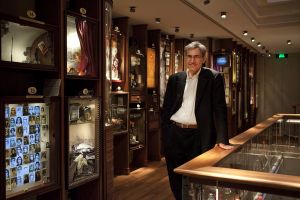 Nobel laureate Orhan Pamuk writes a beautiful passage among many beautiful passages in his novel The Museum of Innocence that explains why the small screen, be it television, computer, or smart phone, will never replace the shared experience of being part of a community of audience members. After describing the crowded Istanbul summer cinemas with “those big families, the mothers in their headscarves, the chain-smoking fathers, the soda sipping children, the single men, the barely suppressed fidgetiness of these people disconsolately [it’s a melancholy book] on their pumpkin seeds as we watched the film…” he writes:
Nobel laureate Orhan Pamuk writes a beautiful passage among many beautiful passages in his novel The Museum of Innocence that explains why the small screen, be it television, computer, or smart phone, will never replace the shared experience of being part of a community of audience members. After describing the crowded Istanbul summer cinemas with “those big families, the mothers in their headscarves, the chain-smoking fathers, the soda sipping children, the single men, the barely suppressed fidgetiness of these people disconsolately [it’s a melancholy book] on their pumpkin seeds as we watched the film…” he writes:
“I crossed my legs and gazed at the stars, dazzled by the beauty of the universe. I had been drawn into this film, coarse as it was, by the audience’s hushed response. If I had been watching the film alone at home on television, it would not have affected me so, and had I been sitting with my mother, I would not have watched it to the end.”
Being in a “bond of fellowship with the audience,” as our narrator describes it a bit later, enriches his experience. People seek community. Both cinema and the live performing arts provide an experience of community fellowship that cannot be equaled by the solitary consumption of media. And this gives me hope.
(Photo of Orhan Pamuk in his Museum of Innocence, creative commons license.)
